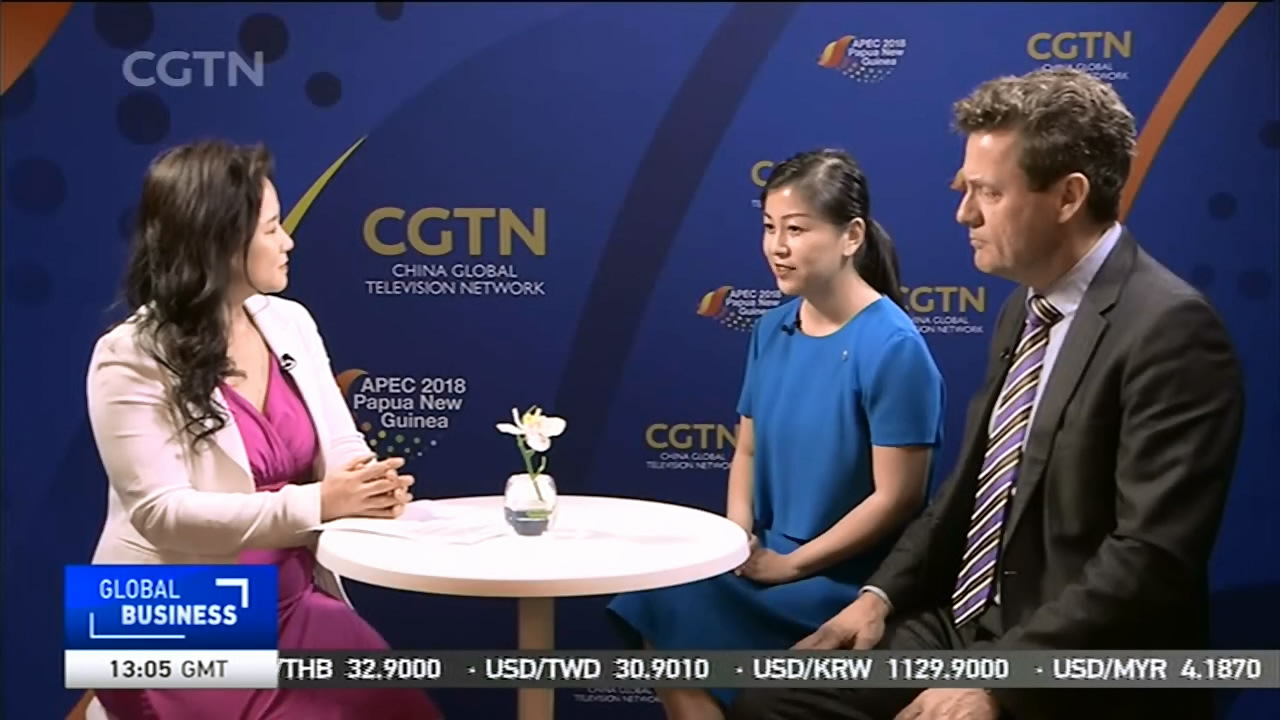
Business
19:44, 20-Nov-2018
APEC brings development opportunities into PNG
Updated
18:47, 23-Nov-2018
By CGTN's Global Business
03:04

Papua New Guinea (PNG), the host of the 26th Asia-Pacific Economic Cooperation (APEC) Economic Leaders' Meeting, is home to eight million people, most of whom live outside urban areas and with poor infrastructure.
The event, which witnessed leaders from 21 member economies in attendance, is also being seen as a turning point for PNG, bringing in various investment opportunities to the state.
For example, the U.S., Japan, Australia, and New Zealand unveiled a 1.7 billion U.S. dollars plan to deliver reliable electricity and internet to PNG.
PNG also signed a multibillion-dollar deal with French multinational integrated oil and gas company, Total SA, to double its exports of liquefied natural gas (LNG).
However, Professor Andrew MacIntyre, Director of the Australian APEC Study Center at the Royal Melbourne Institute of Technology (RMIT), shared his concerns about the implementation of these massive projects.
"One [concern] is the extent to which PNG citizens are employed in these projects. The other thing is the extent to which investment projects could bring multiplier effect to the development, and benefit the society," said MacIntyre.

Professor Andrew MacIntyre (1st R), Director of the Australian APEC Study Center at RMIT and Jean Dong (2nd R), Chief Executive of the Australia-China Belt and Road Initiative during an interview with CGTN, November 20, 2018. /CGTN Photo
Professor Andrew MacIntyre (1st R), Director of the Australian APEC Study Center at RMIT and Jean Dong (2nd R), Chief Executive of the Australia-China Belt and Road Initiative during an interview with CGTN, November 20, 2018. /CGTN Photo
China has also poured investment into development projects in the region, including plans to build a hydropower generation plant in PNG under the framework of Belt and Road Initiative (BRI).
Jean Dong, Chief Executive of the Australia-China Belt and Road Initiative noted that presently, the highlight of the BRI is far beyond infrastructure. There's a lot more focus on service trade and optimization of trade structure.
"Experts told us that the service trade between China and the Belt and Road countries totaled about 100 billion U.S. dollars last year and this accounts for a significant part of total service trade," Dong said.
China has taken steps to improve the development of service trade, gradually opening up finance, education, culture, and healthcare sectors. Apart from traditional service trade, there has been a huge increase in technology and high-value service sector, according to Dong.
Chinese Ministry of Commerce said that economic transformation has boosted the imports of high-end producer services, with imports of financial services and charges for the use of intellectual property up 22.1 and 24 percent respectively, during the January-September period.

SITEMAP
Copyright © 2018 CGTN. Beijing ICP prepared NO.16065310-3
Copyright © 2018 CGTN. Beijing ICP prepared NO.16065310-3